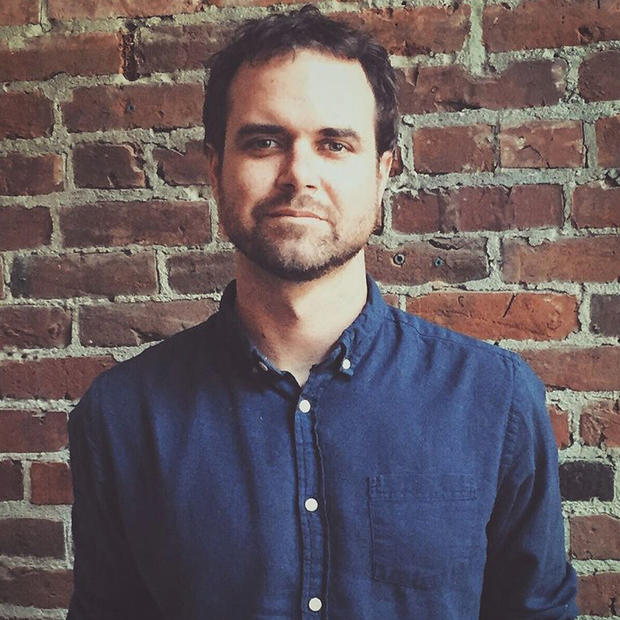Editor's note: In/Flux is a weekly dispatch from the wonderful world of technology.
Amazon's rainforest
Seattle likes its futuristic image — look no further than our downtown library, seemingly beamed in from the 22nd century, and the odd Experience Music Project building. But Amazon’s proposed headquarters in South Lake Union truly represents some next level futurism.
This week Amazon reps met with the Seattle Design Review Board to lay out some minor tweaks to their new home base; namely, they want to abandon the innocuous rectangle they originally proposed in favor of a series of glass spheres fresh out of Star Trek. (The souped-up, J.J. Abrams film version, not Gene Roddenberry's low-budget TV original.)
Local tech companies can forget about impressing recruits with foosball tables and inoperable hot tubs in the work area. Amazon's proposed five-story interconnected glass domes, covering 65,000 square feet, will be filled with plants from around the world, each “selected for its ability to co-exist in a microclimate that also suits people.” They will be arrayed around areas designed for work and relaxation. With all that greenery, it’ll be like a self-contained rainforest, minus the rain — and with plenty of comfortable seating and electrical outlets. No word yet whether the domes will be open to the public — or approved by the Design Review Board.

Honey, is that a drone outside the window?
The Seattle PD may have promised to return its surveillance drones, but we're not free of those flying, spying robotic friends just yet. In the sort of story you just know screams "Future Supreme Court case," Capitol Hill Blog recently received word of a drone levitating outside one neighborhood resident’s upstairs window. Said she:
“I initially mistook its noisy buzzing for a weed-whacker on this warm spring day. After several minutes, I looked out my third-story window to see a drone hovering a few feet away. My husband went to talk to the man on the sidewalk outside our home who was operating the drone with a remote control, to ask him to not fly his drone near our home. The man insisted that it is legal for him to fly an aerial drone over our yard and adjacent to our windows. He noted that the drone has a camera, which transmits images he viewed through a set of glasses. He purported to be doing "research." We are extremely concerned, as he could very easily be a criminal who plans to break into our house or a peeping-tom.”
Whether this "research" is legal is a tricky question, but you have to admire a guy who, when caught using a flying robot to peek at his neighbors, basically responds with, “It’s a free country.”
The couple called the police, who didn’t bother showing up once they heard the drone operator had left. Given the lack of clear laws in this area, and a consumer drone industry primed for takeoff, this is a privacy issue we’ll have to tackle pretty soon. As if Google’s new spy glasses weren’t enough.
GMO app
The campaign to label GMO foods in Washington State is ramping up, but for people who want to support the cause before the November verdict . . . there’s an app for that. Buycott lets users scan product barcodes to learn whether a product’s manufacturer supports anti-GMO campaigns or gay rights, is connected to Monsanto or the Koch Brothers, or is flagged on many other “campaigns.” The app appears to have about 50,000 active users. Not enough to dent the market quite yet. But definitely enough to complicate the old grocery run for our area’s tech-y, socially conscious consumers.
Data police
“Criminals are effectively foragers; choosing what car to steal is like choosing which animal to hunt.” So says UCLA anthropology professor Jeffrey Brantingham, whose criminals-as-opportunistic-scavengers attitude will now inform the Seattle Police Department’s crime fighting approach. Brantingham is co-creator of Predictive Policing, the system Mayor Mike McGinn rolled out citywide this week.
Using mathematical models similar to those used to study chemical reactions, the system attempts to discern patterns that can predict crimes before they happen. The predictions are then used to deploy police officers. Predictive Policing is already in use in Los Angeles, which reports a 13 percent drop in crime in some areas.
Hand printed
3D printers are a true game-changer technology that didn’t get much mainstream attention until recently, when young Texas anarchist Cody Wilson printed an operational hand gun and shared the schematics online for free. The fact that you can “fabricate” a workable firearm is a tad alarming, and the feds cracked down on Wilson swiftly. However, this week others improved on his design; for just $25 in materials and $1725 for the 3D printer, they built a gun that can lick off nine shots.
You can’t put that genie back in the bottle. But there are other, less disconcerting uses for the printers. Take the case of Bellingham resident Ivan Owen, who recently designed a highly affordable prosthetic hand. These prosthetics can often cost at least $10,000, far more for a good one. Owen designed a fully operational hand for roughly $1000 (in materials), then made his design available online for no charge.
To create the hand, Owen worked in online collaboration with South African resident Richard Van As, who had lost four fingers in a woodshoping accident. Van As saw a video Owen posted on YouTube, featuring a claw he’d 3D-printed for a sci-fi convention, and asked for his help making some replacement digits. The duo, neither of whom is a professional engineer, were later contacted by the mother of a five-year-old South African boy named Liam who was born without a hand. Several months and multiple prototypes later, Liam's enjoying his first right hand.

